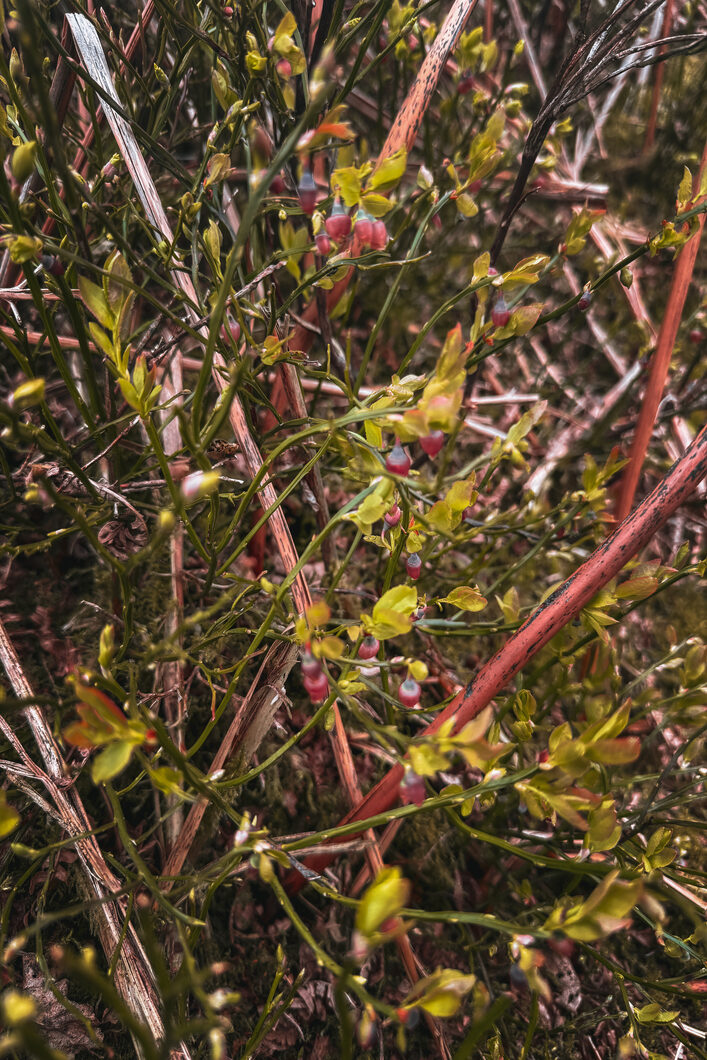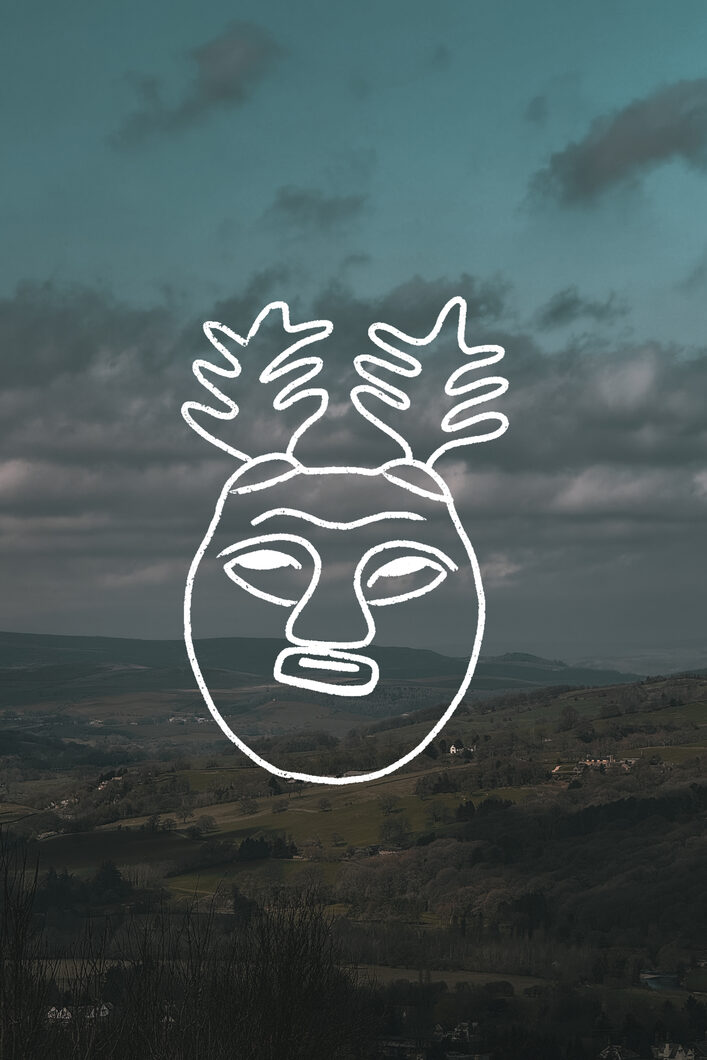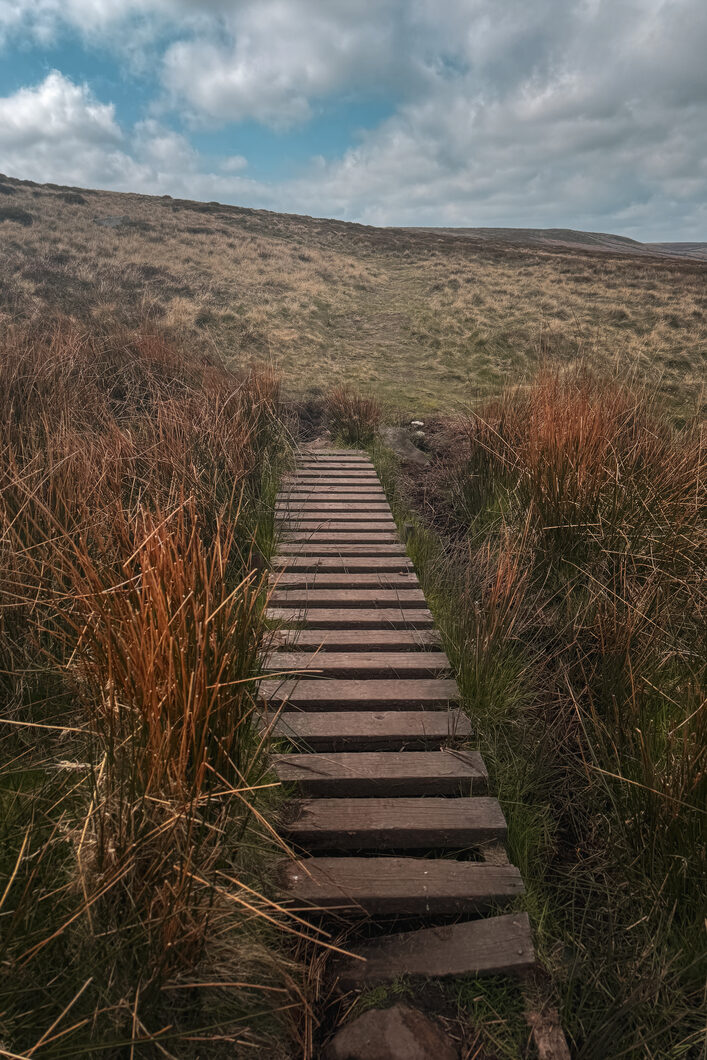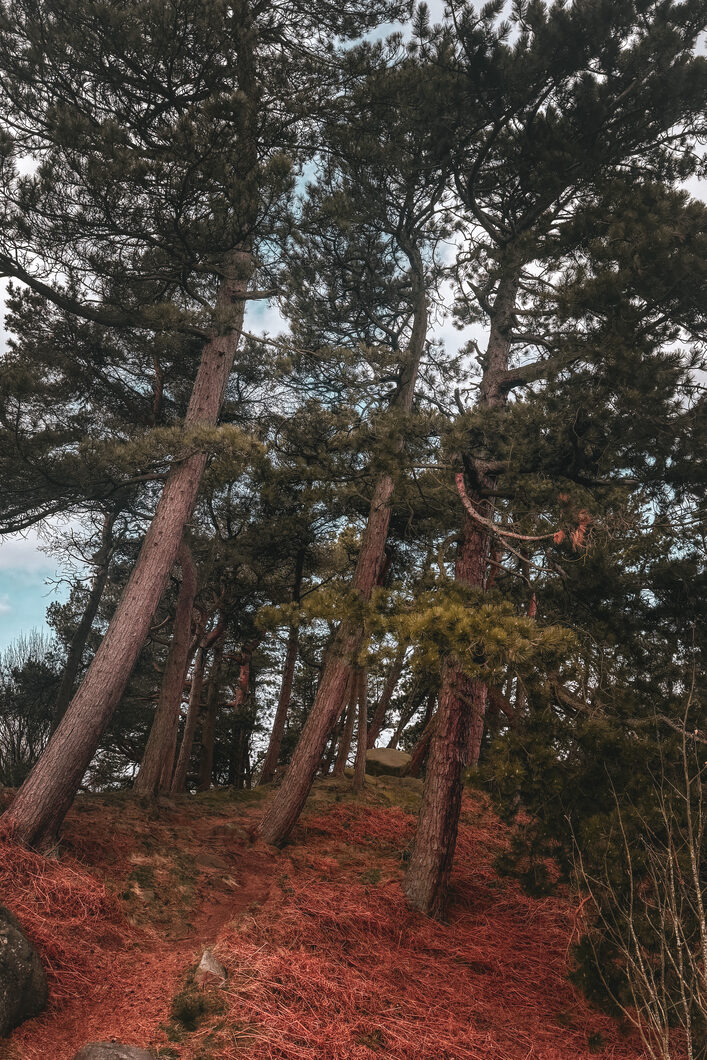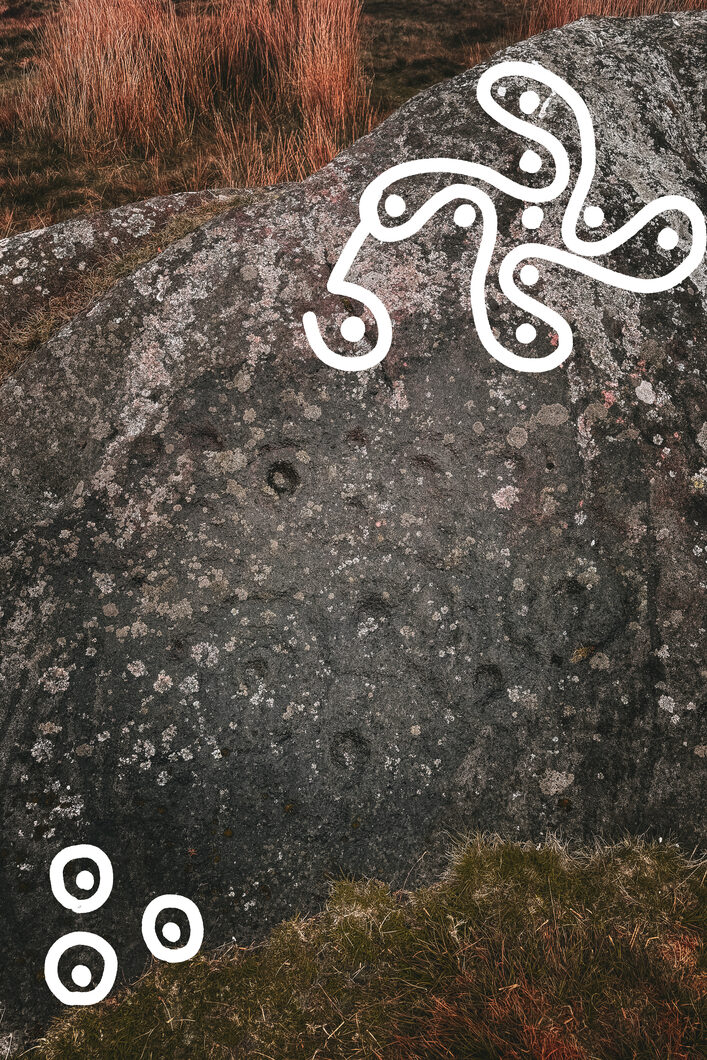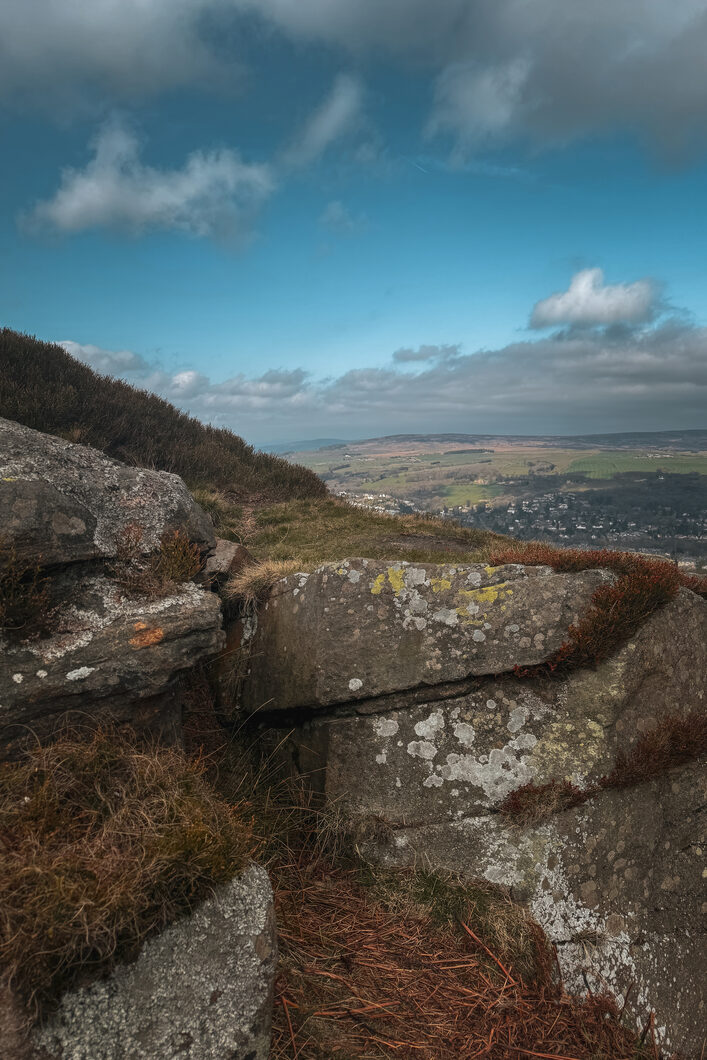Rombald's Moor
Where the wind carries stories

Walk far enough and you’ll begin to feel it, the sense that this landscape remembers.
Rombalds Moor stretches wide under a big sky, its surface a shifting patchwork of Heather, Bracken, and grass. Cotton grass sways like pale smoke in the damper dips, and the scent of sun-warmed earth is carried by wind that never quite stops moving. Bilberry clings low to the ground, and if you’re lucky — or patient — you might catch the flick of a Green Hairstreak butterfly, or the low whirr of a Red Grouse breaking from the heather.
But it’s not just the wildlife that stirs the imagination here. This is a place woven through with folklore and mystery.
They say a giant once roamed these hills. Rombald, wild-tempered and mountain-sized, stomped across the valley during an argument with his wife. Where his foot fell, a great rock split in two: now known as the Cow and Calf. Fleeing with a skirt full of stones, she scattered them in her wake, forming the cairns still found across the hillside.
Whether you believe in giants or not, there’s no denying the presence of something ancient here. Carved into the earthfast stones across the moor are strange, beautiful markings. Cup marks, spirals, and even swastikas, symbols of the sun and sky, dating back to a time when the meanings were spiritual, not political. They speak in a language we no longer understand, but still feel drawn to.
Over 300 of these carved stones have been found here, many hidden in plain sight, softened by lichen, half-sunk in moss, weathered by time and rain. Some lie near burial cairns. Others perch on high ground, overlooking the Wharfe Valley as though keeping watch.
Maybe they were maps. Maybe they marked graves, told stories, called the sun. Or maybe, like all the best things in nature, they just are - their purpose long gone, their presence still powerful.
We came looking for carvings, but left with something else: a sense of wonder, and a reminder that the land always has more to say, if you know how to listen.
